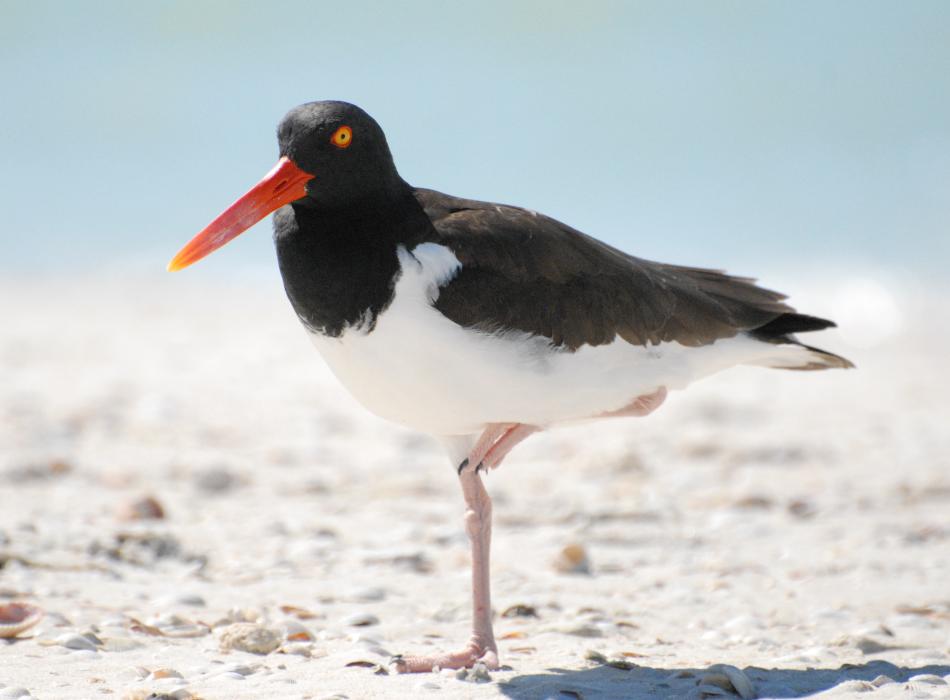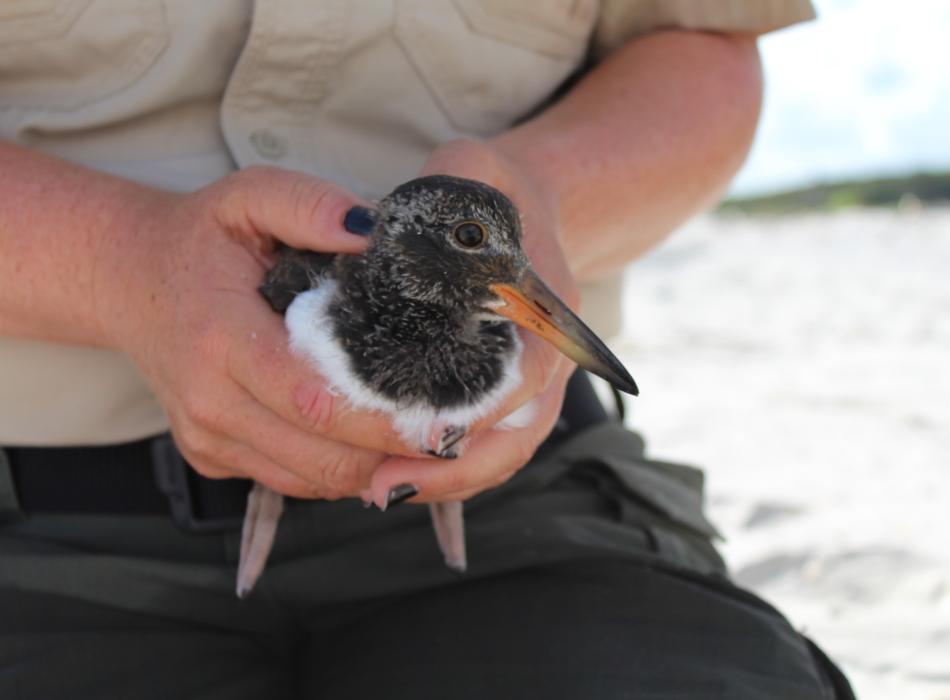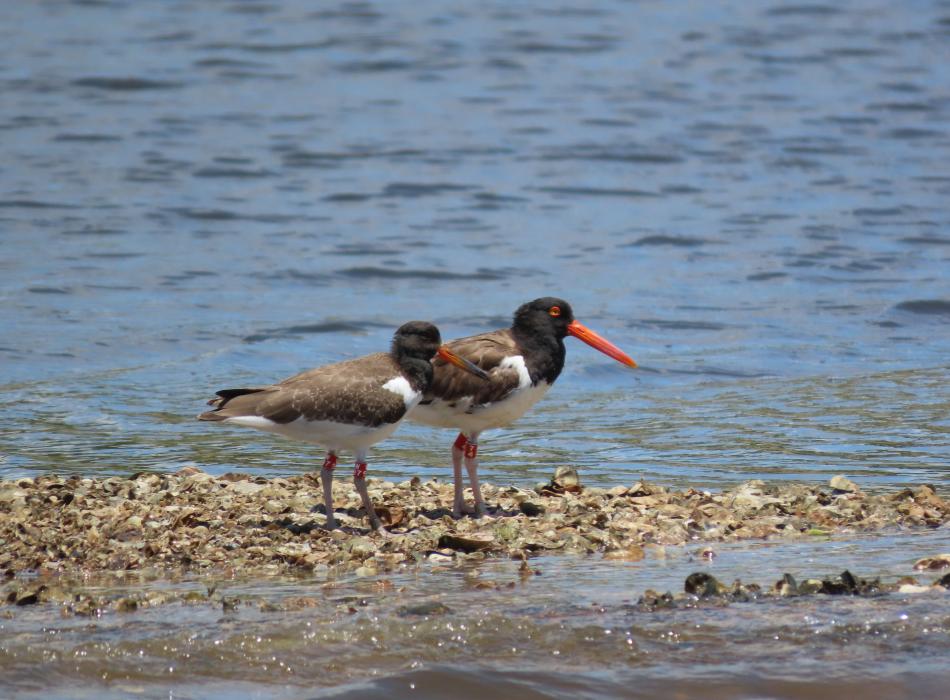American oystercatchers are sensitive to the urbanization of beaches. Increased traffic and development in these areas has caused this bird to earn the classification of a state-designated threatened species. The National Audubon Society lists this species as "national conservation concern."
Coastal development has resulted in substantial habitat loss, and subsequently, the population numbers have suffered. One such place where the population has struggled is Bald Point State Park and Alligator Harbor. Recently, the staff at Bald Point State Park partnered with shorebird biologists from the Florida Fish and Wildlife Conservation Commission (FWC) to create and execute a plan to improve the habitat.
In 2015, staff from Bald Point State Park, FWC and Audubon Florida collaborated to monitor shorebird nesting in Alligator Harbor.
In total, six to eight breeding pairs are regularly monitored, including one pair found within the state park boundary. This pair was banded in 2015 as female red 88 and male red 89. In six years of nesting attempts, the pair experienced three wash-over events, one loss due to human disturbance, and one successful fledgling.
In 2020, the loss of female red 88 (likely to a raptor) led to the abandonment of their nest by the male. Not all was lost as the male soon after paired with a new female, red 74, which also was banded in 2015 in Alligator Harbor.
The loss of female red 88 prompted discussions to improve the nesting habitat and address site-specific threats. Staff at Bald Point State Park collaborated with FWC to improve and protect the habitat for the American oystercatcher to promote successful breeding.
To address threats from potential predators, staff and FWC removed raptor perches such as standing snags and other small trees and added perch deterrents to signage. To address human disturbance issues, staff added park boundary signage, and FWC added shorebird signage to alert visitors of the presence of shorebird nesting activity. Posting of nesting, brood-rearing and sensitive feeding habitats is one of the primary means of reducing disturbance statewide.
As a result of the improvements made on the habitat prior to the 2021 nesting season, the pair of American oystercatchers (female red 74 and male red 89) successfully hatched their nest. One chick fledged the nest and was banded as red W97.







